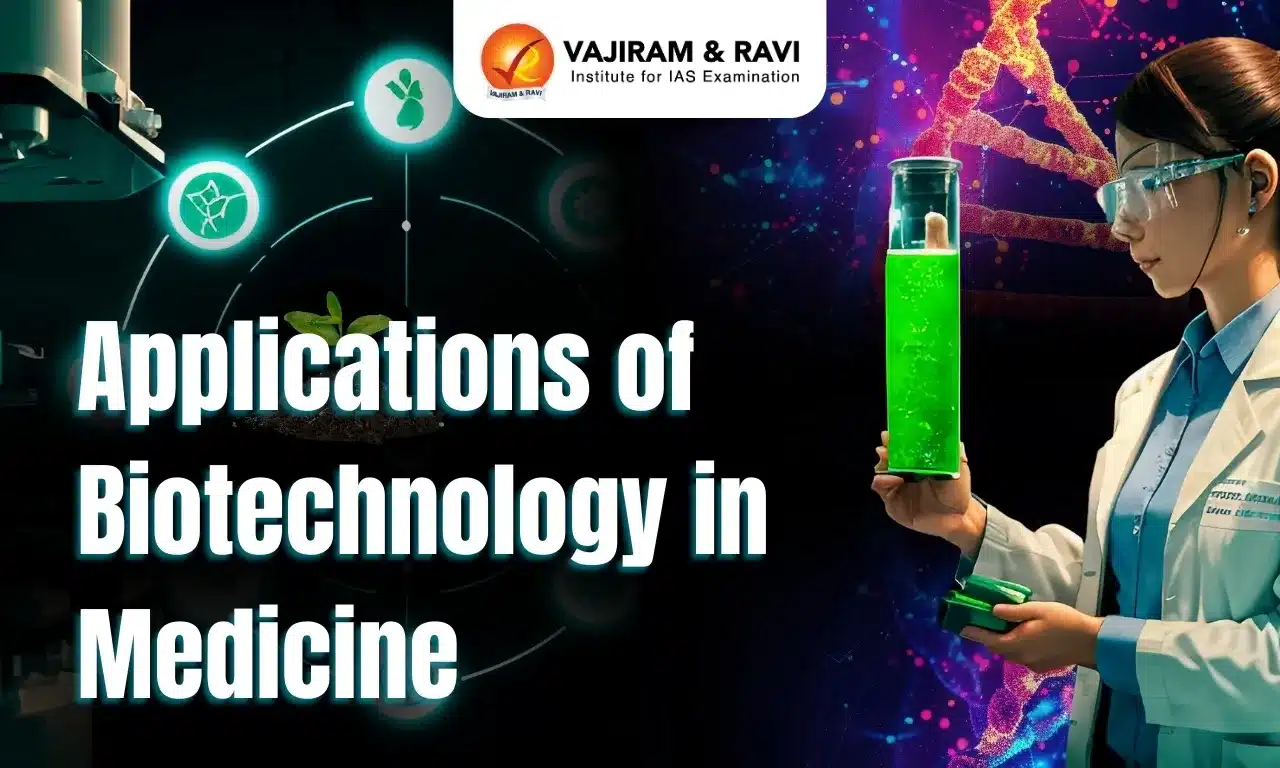Nanotechnology involves the understanding, manipulation, and control of matter at the nanoscale, i.e., at dimensions between approximately 1 and 100 nanometers. Nanotechnology is being applied across the entire spectrum of manufacturing processes and products. It has the potential to radically change manufacturing through the development of faster, cleaner, and more energy-efficient systems and materials.
Nanomaterials and nanoelectronic devices are leading to enhanced manufactured products with novel properties. The integration of nanotechnology into manufacturing processes is expected to transform industry in the 21st century.
Nanomanufacturing Techniques
Nanomanufacturing refers to the specialized fabrication methods required to create structures and devices at the nanoscale, typically between 1-100 nanometers. Two main approaches exist:
- Top-down methods: These techniques manipulate larger-scale materials and structures down to the nano-level.
- Photolithography transfers mask patterns to a light-sensitive layer, which is common in semiconductor printing on silicon wafers for integrated circuits.
- Micromachining sculpts nanostructures with tools, while etching uses acids to selectively erode materials for nano-sized patterns.
- Direct write methods, like microcontact printing and dip-pen nanolithography, deposit nano-scale inks onto substrates.
- Bottom-up methods: These techniques build up nanostructures atom-by-atom or molecule-by-molecule.
- Chemical synthesis bonds atoms/molecules into nanostructures via designed reactions.
- Molecular self-assembly organizes molecules spontaneously into stable nanoscale structures.
- Positional assembly guides nano-element assembly into organized patterns using external forces.
- Molecular beam epitaxy deposits single atomic layers onto a crystalline substrate, growing nanostructures.
- Additional techniques:
- Computer modelling enables computational design, simulation, and analysis of nanomaterials
- Scanning probe techniques like scanning tunnelling microscopy allow direct imaging and manipulation of individual atoms.
Innovations of Nanotechnology in Manufacturing
Nanotechnology is driving innovations across the manufacturing sector, including materials, industrial processes, quality control, and product design. This includes:
Materials

Nanotechnology allows the synthesising and engineering of materials where constituents are designed and organised on the nanometer scale to achieve superior properties. This includes:
- Metal alloys: Alloy systems like steel, magnesium, and aluminium alloys can be reinforced by integrating nanoscale features like nanoparticles, nanolayers, and nanocomposites.
- This imparts dramatically improved strength, hardness, and corrosion/oxidation resistance compared to conventional alloys.
- Metal nanoparticles: Metallic nanoparticles exhibit unique optical, electronic, and magnetic properties owing to quantum effects.
- They find diverse applications in the sintering of nanostructured metals, alloying elements, catalysts, sensors, and actuators.
- Popular metal nanoparticles include gold, silver, iron oxide, and titanium dioxide.
- Ceramics: Nanophase/nanostructured ceramics composed of nanoscale grains exhibit significantly enhanced mechanical properties like hardness, and toughness, as well as improved electrical, optical, magnetic and thermal properties compared to conventional ceramics.
- Examples include nanocrystalline alumina, zirconia, titania, and silicon carbide.
- Polymers: Incorporating nanoscale fillers like nanoparticles, and nanotubes/fibres reinforces polymers and produces nanocomposites with superior strength, flame retardance, abrasion/scratch resistance, and barrier properties.
- Nanoscale surface engineering of polymers imparts functional coatings like antibacterial, self-cleaning, and anti-fouling.
- Composites: Reinforcing composite systems with nanoparticles, nanotubes, and nanofibers results in drastically improved strength, stiffness, fracture toughness, fatigue and creep resistance compared to conventional composites.
- Smart materials: Nano-enabled smart materials can be engineered to exhibit controllable properties when exposed to external stimuli like stress, temperature, moisture, light etc.
- Shape memory alloys, self-healing polymers, and chromogenic systems are examples. This allows the creation of structures/devices that can respond to the environment.
- Biomaterials: Nanoscale engineering of biomaterial surfaces modulates biological interactions, allows better integration with cellular systems and improves the performance of medical implants, prosthetics, diagnostic devices etc.
Industrial Processes
- Nanometrology: It involves precision measurement, characterisation and quality control at the nanoscale.
- Advanced microscopy techniques like scanning electron, atomic force, and scanning tunnelling microscopy enable visualising and manipulating nanostructures.
- Spectroscopic techniques like Raman spectroscopy characterise materials based on molecular signatures. These underpin research, manufacturing and quality control.
- Surface Engineering: Nanoscale surface engineering techniques impart functional coatings and treatments to improve material performance and properties like wear/corrosion resistance, biocompatibility, electrical characteristics, sensing capabilities etc.
- This includes physical/chemical vapour deposition, microarc oxidation, sol-gel processing, electrophoretic deposition etc.
- Nanolithography: It refers to fabrication techniques for creating nanoscale structures and devices.
- Photolithography uses light to pattern nanostructures on substrates.
- Nanoimprinting uses moulds to imprint nanofeatures on materials. This facilitates the development of nanoelectronics, sensors, microfluidics etc.
- Nanomanipulation: It involves techniques for directly handling, positioning, analysing, assembling and modifying materials, molecules and structures at the nanoscale using probes.
- Scanning probe microscopes are commonly used.
- Chemical synthesis: These methods facilitate large-scale, high-volume manufacturing of nanoparticles, nanotubes, and nanowires with controlled sizes and compositions by engineering reactions at the molecular scale.
- Some approaches used are sol-gel processing, electrochemical deposition, hydrothermal/solvothermal synthesis, chemical vapour deposition etc.
- Self assembly: It involves the spontaneous organisation of nanoscale components like molecules, nanoparticles, and nanotubes into structured, functional systems without external forces.
- This bottom-up approach mimics nature and expands capabilities beyond top-down nanofabrication.
Key Sector Applications of Nanotechnology in Manufacturing
Nanotechnology is transforming products across the following manufacturing domains:
Automotive Manufacturing
- Lightweight: Metal alloys and composites reinforced with nanoparticles/nanotubes help reduce vehicle weight and improve fuel efficiency.
- Coatings: Nanocoatings drastically enhance surface hardness, abrasion/wear resistance, and corrosion resistance of engine components, and body panels.
- Catalysts: Nanoparticle-based catalysts improve combustion efficiency, and reduce exhaust emissions.
- Sensors: Nanosensors facilitate precision monitoring for vehicle control and safety systems.
- Batteries: Nanomaterials enable durable, high-capacity batteries for electric vehicles.
Aerospace Manufacturing
- Composites: Nanoparticle-reinforced composites offer superior strength, stiffness, and damage tolerance for aircraft structures.
- Coatings: Nanocoatings enable erosion, corrosion, and lightning strike resistance for fuselages and wings.
- Sensors: Extensive network of nanosensors for real-time performance monitoring and control.
- Fuels: Nanocatalysts allow more complete, efficient combustion, reducing emissions.
Electronics Manufacturing
- Nanoelectronics: Nanomaterials facilitate further miniaturisation and integration of electronic components.
- Carbon nanotube interconnects, graphene and quantum dot-based structures are being developed.
- Displays: Carbon nanotubes enable flexible displays. Quantum dots improve colour definition in LED displays.
- Sensors: Nanosensors significantly enhance sensitivity, response time, and portability over microscale sensors.
- Batteries: Nanomaterials like silicon nanowires are used to produce durable, high-capacity batteries for portable devices and electric vehicles.
Textiles
- Fabrics: Nanofiber reinforcement produces extremely lightweight, strong, breathable, and wrinkle-free fabrics.
- Coatings: Nanocoatings impart stain/dirt resistance, wrinkle resistance, flame retardance, and other functional properties to textiles while maintaining breathability.
- Waterproofing: Nanoscale fibres/coatings tightly repel water droplets.
- Sensing: Nanoparticles and nanofibers coated with sensing molecules for smart textiles.
Medical Manufacturing
- Implants: Nanoscale surface engineering of implants like knee or hip implants allows better integration with surrounding tissue.
- Prosthetics: Lightweight nanoengineered prosthetics mimic natural body tissues, and offer superior mechanical properties and biointegration.
- Devices: Nanosensors enable rapid diagnostics. Nanoparticles facilitate targeted drug delivery.
- Wound dressings: Nanosilver coatings provide antibacterial properties. Nanopatterned surfaces stimulate cell growth and faster healing.
- Tissue engineering: Nanoscale scaffolds guide cell proliferation and differentiation to regenerate damaged tissues or organs.
Sustainable Manufacturing
- Energy efficiency: Nanomaterials like aerogels for insulation, nano-enabled solar cells, and thermoelectric devices reduce energy consumption.
- Renewable energy: Nanomaterials improve the efficiency of solar cells, fuel cells, hydrogen storage, and batteries used in renewable power generation.
- Waste reduction: Nanoparticles as catalysts, and nanofiltration enable efficient recycling. Nanocomposites reduce material usage.
- Pollution reduction: Nanocatalysts selectively convert pollutants to less toxic forms. Nanofibers for filtration of ultrafine particles.
Benefits of Nanotechnology in Manufacturing
Key Nano-materials find widespread use in the following manufacturing applications:
- Improved material properties: Nanomaterials enable the development of stronger, lighter, and multi-functional materials.
- For example, carbon nanotubes have a tensile strength 100 times higher than steel at 1/6th the weight.
- Nanocomposites mixed with nano clays, nano cellulose or graphene have superior strength and flame retardancy.
- Product miniaturisation: Nanoelectronics comprise ever-smaller electronic devices and components leading to extremely compact products.
- Higher precision: Nanomanufacturing processes allow the construction of items with nanometer accuracy. This permits exact reproducibility and minimal defects.
- Increased product functionality: Coatings, sensors, and devices added at the nanoscale can enhance performance and add new capabilities.
- Better catalysis: The high surface area of nanoparticles improves their catalytic activity. Nano-engineered catalysts are used to increase the efficiency of fuel production and chemical processes.
- Energy savings: Nanomaterials help reduce energy consumption in various processes due to enhanced heat transfer, light absorption, etc.
- Better insulation,fuel additives, batteries and electronics developed using nanotechnology also save energy.
- Waste reduction: Nanomanufacturing techniques minimise material waste. Lighter nano-engineered products further reduce raw material usage and energy needs during transportation.
- Safety enhancement: Nanosensors can detect defects, cracks, or failures well before the eye can see them. This helps prevent catastrophic system failures.
Challenges of Nanotechnology in Manufacturing
While offering immense transformative potential, there are some challenges facing the large-scale adoption of nanotechnology in manufacturing:
- High cost of nano-engineered materials and commercial-scale nanofabrication techniques compared to conventional methods.
- Difficulty achieving uniform dispersion of nanomaterials like carbon nanotubes in composite matrices. It can impact strength and quality.
- Scalability issues arise in translating nanoscale processes developed in the lab into industrial-scale manufacturing.
- Environmental concerns: Wastewater from manufacturing industries represents a threat to the environment due to the inherent toxicity of synthetic (organic and inorganic) chemicals.
- Integration challenges for incorporating nanomaterials into existing manufacturing workflows and quality control protocols.
- Ambiguity around intellectual property rights and licensing issues for commercialisation of lab-scale nano-innovations by startups and research groups.
Way forward
Some promising research directions that can harness nanotechnology's capabilities for improved manufacturing Industry outcomes include:
- R&D and commercialisation of nanomaterials like graphene, nanocomposites, and carbon nanotubes that can transform the properties of finished products across industries.
- For example, initiatives like Nano Mission.
- Adoption of nanofabrication techniques like dip pen lithography, and nano-imprinting that can enable low-cost, scalable manufacturing of nanocomposites. Setting up dedicated nanofabrication centres.
- Providing nano-enabled sensors and automation solutions for intelligent and real-time process control on factory floors. Incentivizing adoption under Smart Advanced Manufacturing and Industry 4.0 initiatives.
- Develop a skilled workforce through training programs on nanoscience and nanoengineering to implement nanotech-driven innovations in the manufacturing sector. Introducing ITI courses on nanotechnology applications.
- Responsible development through toxicological studies, safety guidelines, and environmental regulations for engineered nanomaterials. Undertaking life cycle analyses of nanomaterials under Nano Mission.
- Public-private partnerships, including collaboration with MSMEs, to make the benefits of nanotechnology accessible for wider industry adoption. Schemes to support MSMEs.
- International cooperation, technology transfer, and best practices sharing to fast-track nano-enabled advances in manufacturing. Joint research through Indo-EU centres, and workshops for industry.
- Support tech startups and entrepreneurs working on nanotech products and solutions applicable to the manufacturing industry via incubator schemes. Contributing through Atal Innovation Mission.
Continued research in nanomaterial synthesis, characterization, and safety is key for widespread nanotechnology adoption. Responsible and sustainable development can significantly advance manufacturing technology, ushering in a new era of materials innovation.
Last updated on January, 2026
→ Check out the latest UPSC Syllabus 2026 here.
→ Join Vajiram & Ravi’s Interview Guidance Programme for expert help to crack your final UPSC stage.
→ UPSC Mains Result 2025 is now out.
→ UPSC Notification 2026 Postponed for CSE & IFS which was scheduled to be released on 14 January 2026.
→ UPSC Calendar 2026 has been released.
→ UPSC Prelims 2026 will be conducted on 24th May, 2026 & UPSC Mains 2026 will be conducted on 21st August 2026.
→ The UPSC Selection Process is of 3 stages-Prelims, Mains and Interview.
→ Prepare effectively with Vajiram & Ravi’s UPSC Prelims Test Series 2026 featuring full-length mock tests, detailed solutions, and performance analysis.
→ Enroll in Vajiram & Ravi’s UPSC Mains Test Series 2026 for structured answer writing practice, expert evaluation, and exam-oriented feedback.
→ Join Vajiram & Ravi’s Best UPSC Mentorship Program for personalized guidance, strategy planning, and one-to-one support from experienced mentors.
→ UPSC Result 2024 is released with latest UPSC Marksheet 2024. Check Now!
→ UPSC Toppers List 2024 is released now. Shakti Dubey is UPSC AIR 1 2024 Topper.
→ Also check Best UPSC Coaching in India
Nanotechnology in Manufacturing Industry FAQs
Q1. How is Nanotechnology transforming manufacturing processes?+
Q2. How are nanosensors and instruments improving manufacturing?+
Q3. What are some applications of Nanotechnology in the textile industry?+
Q4. How can Nanotechnology impact sustainability?+
Tags: applications of nanotechnology in the manufacturing industry quest

















